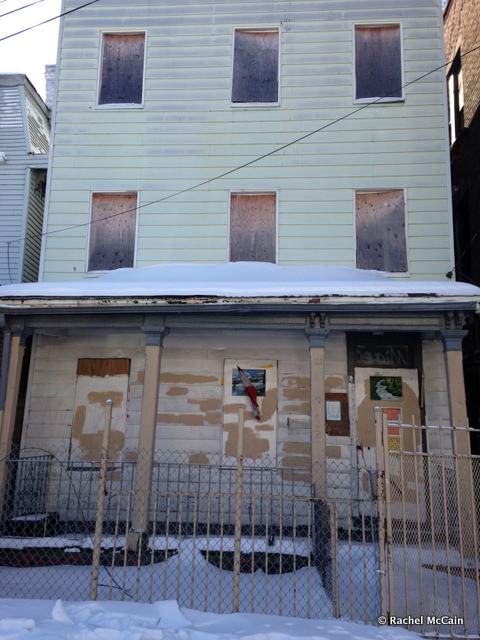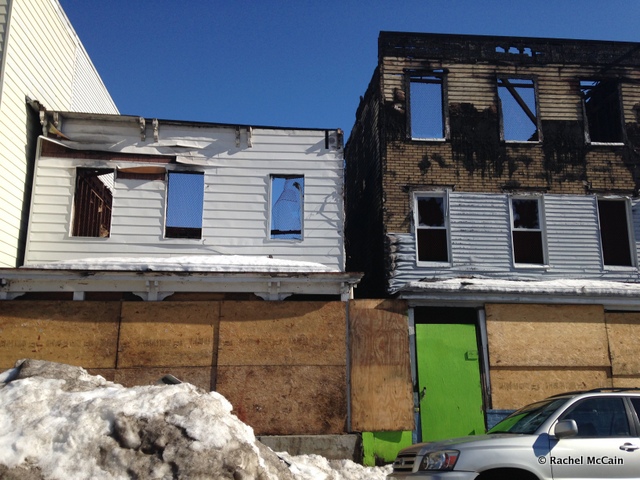In The Park
Arthur Bell sleeps in one of the abandoned buildings near the Hudson River waterfront. He prefers to stay there when it’s cold, he says, and not in one of the shelters. You can get robbed—anything can happen. His friend, who usually accompanies him, is currently in jail. He won’t be released for another few months, so Arthur roves the neighborhood alone. According to Police Officer O’Brien, Arthur was once raped while living on the street.
Most of the vacant buildings in the area he refers to are burnouts–shells of single and multi-family houses still standing, post-fire. Their stability is questionable, but they are assumed to be unsafe and undoubtedly derelict. Some buildings have been boarded up with rotted wood. Some are surrounded by rusty chain-link fences with large manmade holes. Houses are missing roofs and windows; they have charred wooden beams, melted paneling. Yards are strewn with snow-covered debris. A few homes are padlocked shut, adorned with graffiti and No Trespassing signage. Sometimes, he sleeps outside.
“I got blankets,” he says to me through the police car window. “It’s warm. I was staying in St. Mary’s by the park, under the ramp. You know, that Vark Street Park.”
It’s January. Dangerous and deadly, the cold is an unforgiving, muted stillness that settles over the often-glacial concrete sidewalks. But Arthur is used to this.
He is young, under the age of 35. Caucasian with red facial hair and green eyes, a sturdy build. When we see him, he’s wearing brown Carhartt overalls and a black Carhartt jacket–expensive outerwear he says he got from doing side work. He is homeless.
Arthur often visits the Sharing Community homeless shelter, for lunch and other services, and usually is seen outside scouring for cigarette butts. But he won’t sleep there.
“Maybe it’s a bit of a mental problem, and he can’t conform to a 9 to 5,” O’Brien says. “He doesn’t seem like he’s that old, either.”
#
The park where Arthur sleeps is behind a church and across the street from a large low-income apartment complex. Summertime brings activity to the park’s basketball courts, but in January they’re covered with layers of snow and ice, around six inches thick. With the winter wind and proximity to the frozen Hudson River, it’s about 15 degrees. Still, we slowly trek through the slush, walking by empty cans of Crazy Stallion—a cheap beer bought from local bodegas for under $2—in search of Arthur’s “home.”
Past the snow-covered courts in the far corner is a concrete ramp used for walking to an adjoining field. The low-lying ramp by the edge of the park has a crawlspace beneath it, reminiscent of openings found underneath bridges. On the dry ground under the overpass there are stones, dirt, and broken glass. Pieces of cardboard boxes have been grouped together, stuck in the terrain in a row. It’s a makeshift fence—a way to block the frigid January wind.
This is where Arthur sleeps.
“I used to play in this park when I was a kid,” O’Brien says, his voice trailing off. We stand in silence and stare at the space, as warm breath flows from our nostrils.







